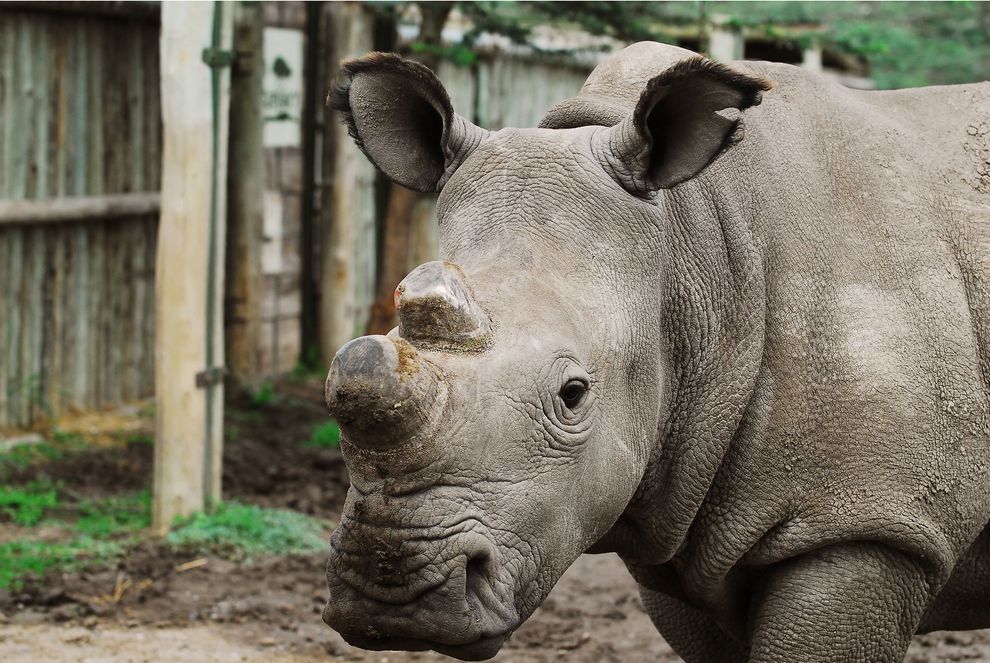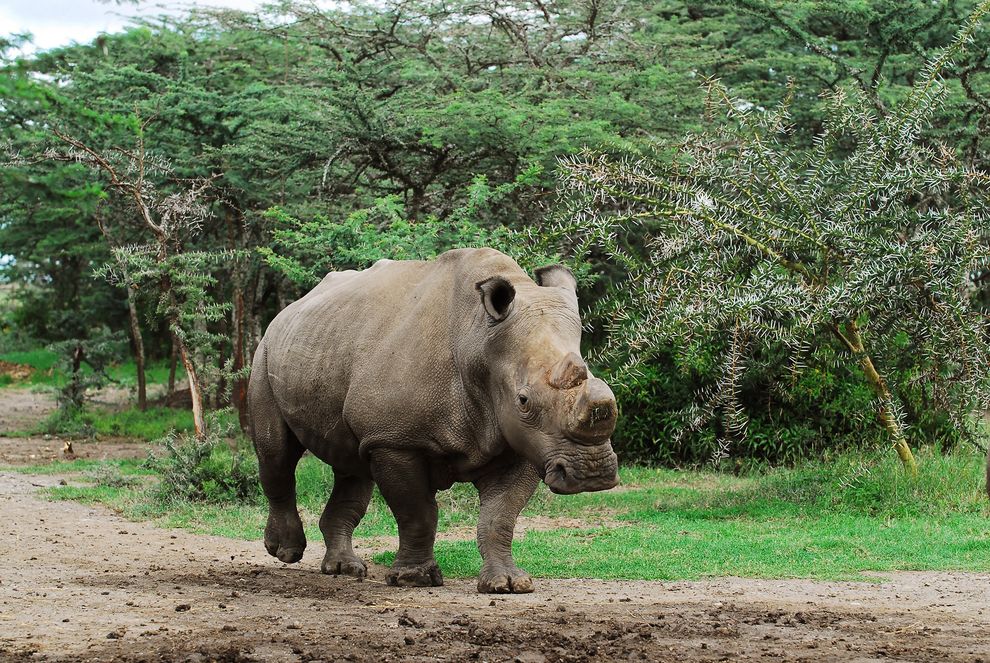
The 34-year-old animal was found dead October 17 in his enclosure in Kenya's Ol Pejeta Conservancy, possibly from natural causes, the reserve said in a statement. White rhinos are thought to be able to live up to 40 or 50 years. An autopsy is under way, but officials are certain poachers did not kill Suni, as the animal was monitored around the clock.
The death of the rare creature, which had not fathered any offspring, leaves only six northern white rhinos left on Earth, including just one male of that subspecies. The southern white rhino, a related subspecies, is considered near threatened by the International Union for Conservation of Nature.
Born at the Dvůr Králové Zoo in the Czech Republic, Suni had been an emblem of hope: He was one of four of the world's eight remaining northern rhinos sent to the Kenyan conservancy in 2009 as part of a last-ditch effort to save the critically endangered subspecies.
So far, it hasn't worked. "It's a shame the subspecies got to that point - that's the worst-case scenario in trying to bring back a subspecies," said Matthew Lewis, senior program officer for African species conservation at WWF.
The northern white rhinoceros is a "victim of evolution," Lewis added - it was a remnant population cut off from the southern white rhinoceros by the Great Rift Valley and the dense forests of Central Africa.
Already isolated and occurring in low numbers, the northern subspecies got caught up in political turmoil in Sudan, the Central African Republic, the Democratic Republic of the Congo, and Uganda, and its numbers quickly dwindled because of poaching and habitat loss.
"Not Just Another Charismatic Animal"
With just one breeding male left, the outlook for the subspecies is grim. Stuart Pimm, a conservation ecologist at Duke University in Durham, North Carolina, now considers the animal basically extinct.
That "we've lost [the subspecies] is a statement of just how bad off large animals are across Africa," said Pimm, who is also a contributor to National Geographic's News Watch blog. "It's a measure of the fact that rhinos are being massively poached and in trouble wherever they are."
From African lions to elephants, many of the continent's megafauna species are plummeting in number due to poaching and other human causes.
"It also means we're losing this distinctive, important animal within the savanna ecosystem," he said.
Rhinoceroses are key to keeping grasslands healthy, as they eat - and keep in check - particular species of savanna plants.
"It's not just another charismatic animal - it's also a species that has a very clear ecological role, and we need to be very worried that we have lost that," Pimm said.

The story of the northern white rhinoceros is "a fantastic lesson on what not to do, and how we need to avoid getting to this point with the other rhinos," Lewis noted.
The black rhinoceros, which has four subspecies, is doing relatively well, though widespread poaching for the animals' horns, which are used in Asian traditional medicine, continues to flourish, he said.
Conservationists are now focusing their efforts on ensuring the safety of these animals and reducing the demand for rhino horn in Asian countries such as Vietnam.
But scientists aren't ready to give up on the northern white rhino entirely, he added.
For instance, if the last breeding male doesn't mate, scientists may be able to breed the northern white rhino females with the southern subspecies.
That would preserve some of the genes of the northern white rhino, even if the genes are mixed with those of their relative.
And the Ol Pejeta Conservancy is still on the case.
"We will continue to do what we can to work with the remaining three animals on Ol Pejeta," the reserve said in a statement, "in the hope that our efforts will one day result in the successful birth of a northern white rhino calf."



Reader Comments
to our Newsletter